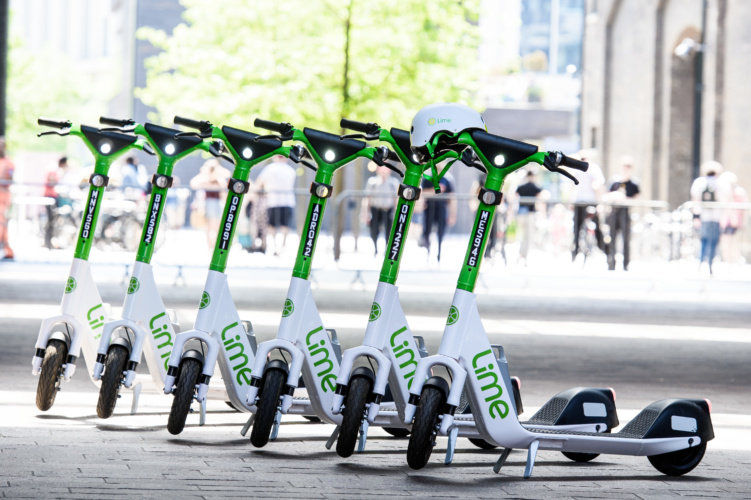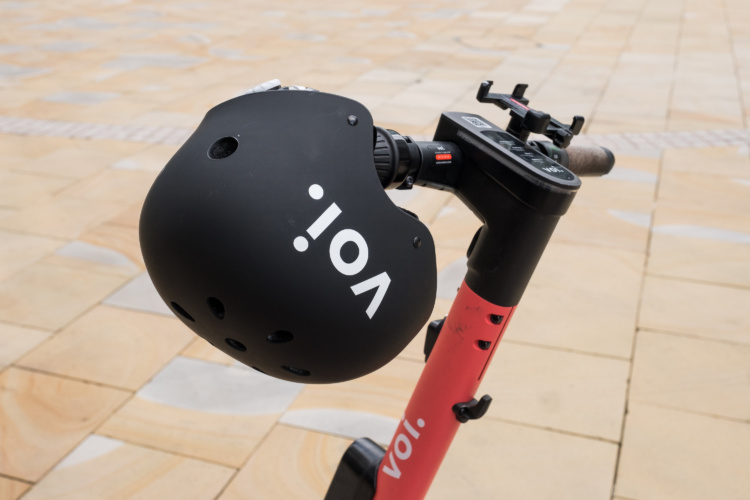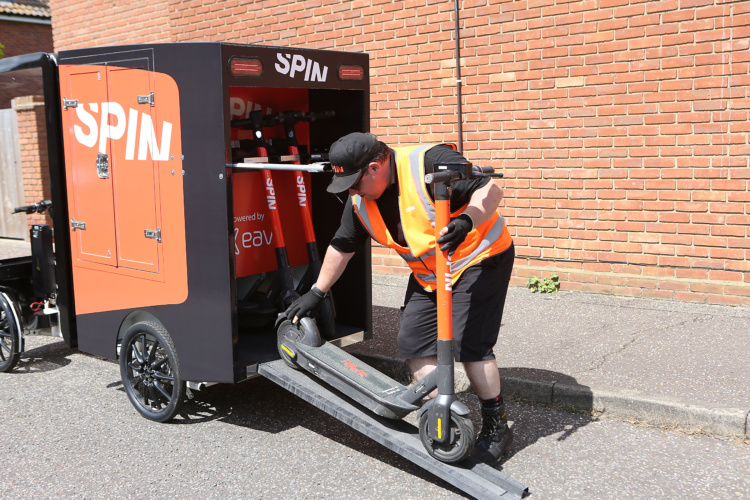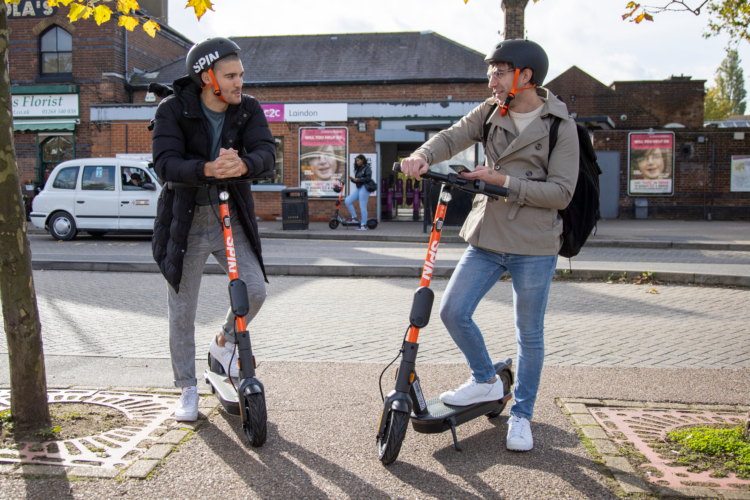
The panel
Jonas Rundberg, VP of Software Engineering at Voi Technology.
Alan Clarke, Director, Policy & Government Affairs for Northern Europe at Lime.
Steve Pyer, UK & Ireland Country Manager, Spin
Describe your activity in this area?
 Jonas Rundberg: Founded in 2018, Voi is a Swedish micromobility company offering electric e-scooter and e-bike sharing in partnership with cities and local communities. Currently operating in over 70 cities, across 11 countries, Voi is the leading shared micromobility provider in Europe and the UK, where we have over 50% of the market share. In all of the countries where we operate, we are excited to have facilitated over two million weekly rides in peak season and an incredible 70+ million rides total.
Jonas Rundberg: Founded in 2018, Voi is a Swedish micromobility company offering electric e-scooter and e-bike sharing in partnership with cities and local communities. Currently operating in over 70 cities, across 11 countries, Voi is the leading shared micromobility provider in Europe and the UK, where we have over 50% of the market share. In all of the countries where we operate, we are excited to have facilitated over two million weekly rides in peak season and an incredible 70+ million rides total.
In the UK, we have won tenders to provide e-scooters in 18 UK towns and cities since trials launched in July 2021 and are delighted to be aligned with the Department for Transport’s vision to regenerate cities in a sustainable way.
 Alan Clarke: As the world’s largest micromobility provider, Lime offers both e-bikes and e-scooters. In the last 3 years we have delivered over 4 million rides. Lime currently operates e-scooter services in London, Greater Manchester and Milton Keynes and was the first operator to launch the UK’s first full scale e-scooter trial in Milton Keynes in August 2020. In June 2021, we were one of three providers selected to launch Transport for London and London Council’s e-scooter trial in the UK capital.
Alan Clarke: As the world’s largest micromobility provider, Lime offers both e-bikes and e-scooters. In the last 3 years we have delivered over 4 million rides. Lime currently operates e-scooter services in London, Greater Manchester and Milton Keynes and was the first operator to launch the UK’s first full scale e-scooter trial in Milton Keynes in August 2020. In June 2021, we were one of three providers selected to launch Transport for London and London Council’s e-scooter trial in the UK capital.
 Steve Pyer: Spin is the micromobility unit of Ford Motor Company. Spin operates electric scooters and bikes in cities and universities worldwide. In the UK, Spin first launched in Milton Keynes just over a year ago where it operates alongside two other providers. Shortly thereafter, it became the sole operator in six locations in Essex. Spin just recently passed the 600,000-ride mark since operating in the UK and this number is continuing to rise at a rapid rate.
Steve Pyer: Spin is the micromobility unit of Ford Motor Company. Spin operates electric scooters and bikes in cities and universities worldwide. In the UK, Spin first launched in Milton Keynes just over a year ago where it operates alongside two other providers. Shortly thereafter, it became the sole operator in six locations in Essex. Spin just recently passed the 600,000-ride mark since operating in the UK and this number is continuing to rise at a rapid rate.
What in your view are the key benefits of e-scooter technology?
JR: E-scooters provide a safe, convenient, affordable and sustainable mode of transport that can be easily integrated into public transport, replacing short car journeys. Research shows that shared e-scooters are making public transport more accessible for many people who don’t otherwise have it on their doorstep. For example, a joint pilot project between Voi, Stuttgart’s rail operator S-Bahn Stuttgart, and the mobility-as-a-service platform Mobimeo, showed a 35% increase in public transport usage by shared scooter users.
e-scooter technology allows for data provision that supports cities in understanding who, where and how their citizens are moving around, which is a valuable asset for transport managers and city planners.

AC: Our goal at Lime is to help replace car trips by giving people easy access to shared and clean transportation options, fitting any need or preference, all in one app. We strive for a future that is shared, electric and zero-emission, and believe that the use of e-scooters is a sustainable, safe and fun way to travel. One in four e-scooter trips globally replace a car trip. By preventing more than 50 million car trips so far, our riders have prevented more than 17,000+ tons of carbon emissions worldwide.
SP: E-scooters are a reliable, inexpensive, accessible, and environmentally friendly alternative to cars and public transport. With the need to reduce solo drive passenger car journeys where there is an alternative to help reduce carbon emissions to tackle climate change, we want to encourage the public to think about how they travel for short journeys and choose a greener mode of transport. The majority (82%) of riders in our recent survey said they had replaced a single car journey with an e-scooter at least once already.
What are you doing to ensure safe and responsible use of your technology and how can technology be used to improve public confidence in the technology?
JR: All our e-scooters have number plates so riders can easily be identified and we monitor the e-scooter activity with staff on the ground. Users who park inconsiderately can receive a £25 pound fine. The results of this initiative are hugely positive, with a 50% turnaround in parking behaviour for the better. In addition, in the UK we have a rigorous strike policy in place, through which users who misuse our service or commit acts of vandalism can see their accounts blocked temporarily or permanently.
Other technology enabled safety measures we have in place include: keeping speed limits at 12.5mph, incentivising first time users to use our ‘Beginner’s Mode’, which limits the e-scooter speed to 10mph; the ‘Helmet Selfie’, which rewards riders with free credits if they wear a helmet; and the ‘Reaction Time Test’, to prevent drink riding.
Using geofencing technology, we work closely with our city partners to create no ride, slow ride (areas where e-scooter speeds are reduced to 5mph) and incentivised or mandatory parking zones.
At the most cutting-edge end of the technological spectrum is a pilot project being tested in Northampton, which combines computer vision and AI technology to detect pavement riding.
E-scooter adoption is increasing across the UK and elsewhere, as more people ditch their cars in favour of a quieter and greener mode of transport. However, the lack of dedicated parking infrastructure is a cause for concern and can lead to congestion and clutter. At any given point in time, between 0.5 and one per cent of e-scooters are not left upright. Sensors, including accelerometers and dynamic GPS technology, can determine the position of each Voi e-scooter and automatically issue an alert to ground staff, who then remove the clutter.
Similarly, built-in technology and GPS data are being used to identify areas of e-scooter overcrowding. A pilot, being run in a number of UK cities, including Bristol, Birmingham, Liverpool and Cambridge prevents too many scooters from being parked in one place at any one time.
At the most cutting-edge end of the technological spectrum is a pilot project being tested in Northampton, which combines computer vision and AI technology to detect pavement riding.
Our latest e-scooter model, the Voiager 4 (V4) includes turn indicators with 360° visibility, designed to increase the e-scooter’s presence to other road users, improved hydraulic suspension and large, higher-quality tyres to increase shock absorption and stability. The V4’s all-new IoT (Internet of Things) software, enables a range of safety and operational innovations, including high-accuracy, sub-metre positioning to improve location accuracy. In addition, the V4 intelligent system allows us to conduct automatic diagnostic checks that predict the need for maintenance or repairs, identifying 55 unique error conditions which, if triggered, instantly make the e-scooter unavailable for hire and alert the operational team.
AC: Our e-scooters are packed with safety features including GPS geofencing technology, a limited top speed of 12.5 mph, and a stopping distance of 50% faster than most e-scooter models. Every Lime e-scooter is also checked and maintained on a daily basis to ensure it is safe to be ridden.
We were the first to introduce First Ride training to provide users with a safe and secure environment to learn the rules of riding with Lime. We have also developed a virtual e-scooter driving school in partnership with the AA, ‘Learn to Lime UK’, aimed at providing UK users with all the resources they need to ride safely and park responsibly with Lime.
SP: Rider and pedestrian safety are an absolute priority for all e-scooter rental companies.
One of the ways we do this at Spin is through an in-app training module which each new rider must complete before their first ride. This also includes a module that was created in partnership with London Vision to ensure riders are considerate of vulnerable pedestrian groups, such as the visually impaired.
In terms of geofencing, using GPS, we can limit an e-scooter’s speed. This includes enforcing slow-riding zones in high footfall areas as well as both no-riding and no-parking zones which are clearly visible in the Spin app. Penalty structures are also put in place for those misusing the shared scooter system, including warnings, fines and account suspension.
One of the top concerns from cities is pavement riding and pedestrian safety. We expect that our Spin Insight Level 2 technology will have a significant impact on others’ safety as it helps detect pavement riding and warns users as well as pedestrians. The real-time audible warning emitted by the scooter when it’s traveling on a pavement will alert pedestrians and encourage the rider to return to the road.
What key lessons have you learned from recent trials?
JR: We have learned that e-scooters can be a challenge for vulnerable road users and therefore we have been working closely with charities and organisations such as Open inclusion and the Royal National Institute of Blind People (RNIB) to understand how we can overcome those challenges.
As part of our ongoing collaboration with the RNIB we have co-designed parking racks to improve visibility and address mobility issues faced by blind and partially sighted people which are now installed in cities such as Birmingham and Southampton.
In addition, in June 2020 we started to pilot e-scooter sounds in three of our major cities (Birmingham, Bristol and Liverpool) to combat pavement riding and help protect visually-impaired or blind pedestrians. The ‘low hum’ sound was designed by our team of engineers, and the sound replicates the types of artificial engine noise introduced on electric cars in recent years. This can be adapted and improved by our team of engineers based on feedback from users and the visually-impaired community.
Another example is the capacity to adapt our operations to specific events such as the Euros, local concerts or cultural events, by changing the operating hours or by ensuring our e-scooters are available to help people move around town, thus reducing short car journeys.
SP: We consistently refine our service as we gather feedback from the public, stakeholders, and local authorities. We have introduced several measures since the start including virtual and physical parking bays in busy areas, and trialling reduced 12.5mph and 10mph speed limits in specific areas.

We also now have ambassadors on the streets in Essex who move the e-scooters if they are parked inappropriately, give guidance to riders, inform pedestrians, and hand out leaflets on the dos and don’ts of riding an e-scooter.
We know that sometimes riders need to be nudged towards making better parking decisions to ensure cities are free of street clutter. That’s why we have launched our Spin Insight Level 2 technology that notifies the rider in real time if they are parking incorrectly – such as on pavements – prompting them to correct their behaviour. This then captures aggregated and anonymised data that Spin shares with local authorities to help inform better regulation going forward.
How do you see the technology developing?
JR: E-scooters are becoming an integral part of the city, not only as a mode of travel but also as a moving device that can capture data. This data is invaluable to cities and legislators to make better and more informed decisions when it comes to transport and city planning.
From a product perspective, we will see new developments in emerging tech such as computer vision and AI being adapted and piloted on e-scooters. In the years to come we believe there will be a race to find the simplest and yet most effective tech solutions, which will require engineers to be even more creative.
AC: We welcome the steps the UK Government has taken to thoroughly assess the benefits e-scooters can provide towns and cities across the country, and are proud to be contributing data that will inform the long term regulation of these vehicles - providing another way to make our urban environments healthier and happier places to live.
SP: Electric vehicle technology is constantly evolving. As well as leveraging AI technology to mitigate pavement riding and incorrect parking, we also plan to roll out remotely operated e-scooters in the UK as we have in the US. There has been a lot of fanfare behind the prospect of remotely controlled e-scooters for some time, so we are pleased to be the first company to be bringing them to the streets in the form of our ‘Spin Valet’ platform, which will enable us to automatically re-park scooters out of the pathway of pedestrians within seconds. Going forward it is hoped that this technology will enable users to ‘hail’ an e-scooter via the app too, in a similar way to taxis currently.
As well as leveraging AI technology to mitigate pavement riding and incorrect parking, we also plan to roll out remotely operated e-scooters in the UK as we have in the US
But we are constantly looking to innovate in our logistical operations too. For example, in Chelmsford, Essex, we are deploying a custom-made e-cargo bike alongside our vans to help replace batteries and we anticipate this will help ease traffic. This ultra-lightweight, emissions-free vehicle will carry spare batteries, tools, replacement parts and hold up to three e-scooters as the operations team pedals it around to meet changing demands.




AI-generated medical responses need monitoring, study finds
This would negate most of the benefit of using AI in the first place, rather like the Locomotive Act 1865 that required any self-propelled road...